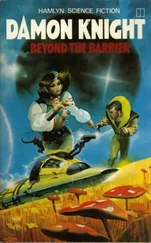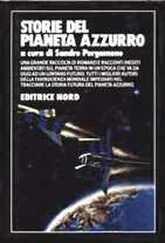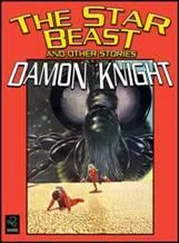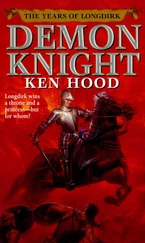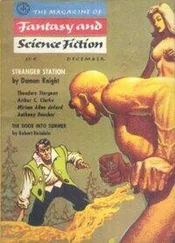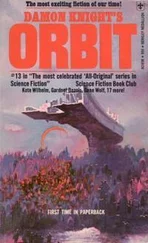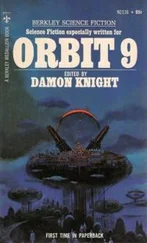Damon Knight - Orbit 19
Здесь есть возможность читать онлайн «Damon Knight - Orbit 19» весь текст электронной книги совершенно бесплатно (целиком полную версию без сокращений). В некоторых случаях можно слушать аудио, скачать через торрент в формате fb2 и присутствует краткое содержание. Год выпуска: 1977, ISBN: 1977, Издательство: Harper & Row, Жанр: Фантастика и фэнтези, на английском языке. Описание произведения, (предисловие) а так же отзывы посетителей доступны на портале библиотеки ЛибКат.
- Название:Orbit 19
- Автор:
- Издательство:Harper & Row
- Жанр:
- Год:1977
- ISBN:0060124318
- Рейтинг книги:5 / 5. Голосов: 1
-
Избранное:Добавить в избранное
- Отзывы:
-
Ваша оценка:
- 100
- 1
- 2
- 3
- 4
- 5
Orbit 19: краткое содержание, описание и аннотация
Предлагаем к чтению аннотацию, описание, краткое содержание или предисловие (зависит от того, что написал сам автор книги «Orbit 19»). Если вы не нашли необходимую информацию о книге — напишите в комментариях, мы постараемся отыскать её.
Orbit 19 — читать онлайн бесплатно полную книгу (весь текст) целиком
Ниже представлен текст книги, разбитый по страницам. Система сохранения места последней прочитанной страницы, позволяет с удобством читать онлайн бесплатно книгу «Orbit 19», без необходимости каждый раз заново искать на чём Вы остановились. Поставьте закладку, и сможете в любой момент перейти на страницу, на которой закончили чтение.
Интервал:
Закладка:
“Tell me the third way, Etta Mae. I have to consider lots of fringe things for the Big What and Why Book.“
“It’s that somebody doesn’t want you to run out of pebbles because you have so much fun throwing them. So, whoever it is, he keeps making pebbles for you every time it rains. You know Mrs. Justex on the eighteenth floor. She always used to live in a house before she came here, and she had a little ledge outside her kitchen window where her milk would be left every morning. She took the apartment here and saw that there wasn’t any ledge. ‘How will I get milk?’ she asked herself. So she nailed up a little ledge like the one you fixed for yourself there. And every morning there would be a quart of milk for her on the ledge. This went on for a week till she happened to think, ‘Who is my route man here? And how does he get up to the eighteenth floor on the outside of this building?’ She heard him then—it was early in the morning—and she went to see. She opened the window suddenly and knocked him off. He fell down and was killed on the sidewalk. But he faded away, and there wasn’t anything left of him when she went down to look. After that, she had to start buying her milk in the store.”
“No, Etta Mae, I know Mrs. Justex. That’s just one of the stories that she tells when she’s wet-braining it in the Wastrels’ Club.”
“It did seem kind of doubty. I don’t believe she drinks milk at all. What is the half an answer and the whole answer that you have to find out before you can put the book together?”
“The half one is, ‘Why does a baseball curve?’ I think I have that half whipped. I’m going to see a man today who is supposed to know the answer. And the whole answer I’m looking for is to the question, ‘How do the pebbles get under the eaves?’“
“Oh, well, it’s got to be one of the three ways I told you.” Bill Sorel stood there at the window and threw every pebble away. That is important. He didn’t miss a one. Then he got a little broom and swept that ledge clear of everything.
Bill Sorel should have had an easy job of putting that book together. He already knew all the answers except for that half answer and that full answer. He had once handled a lot of the questions in a little daily feature before it was canceled out on him. He could use that material again. And most of the other answers he had already filed in his head for ready use. Besides, there were already many such books that he could draw upon, besides the real reference books, and besides the palaver of his own keenwitted friends. He had had it down to three unanswered questions when he applied for a shot at the Big What and Why. And now he had it down to one and one-half.
When Bill Sorel had come on the scene there had been three questions going around wearing blatantly false answers. These were: “What Makes it Thunder?” “What Makes a Baseball Curve?” “How Do the Pebbles Get Under the Eaves?” It is hard to believe the answers that had been given to these questions by scientists, some of them grown men.
Listen to this one:
“Thunder is produced when lightning heats the surrounding air and causes it to expand and send out waves. The expanding wave is heard as thunder.”
Well, what can you do when you come on something like that? Possibly it was better than the answer that earlier generations gave, that the lightning burned up the air and the thunder was caused by new air rushing in to fill up the place.
Well, Bill Sorel had found out what causes thunder. It was really a wonder that somebody else hadn’t stumbled onto the right answer before he had. Read it. Read the amazingly evident answer in The Child’s Big What and Why Book.
Listen to this about a baseball. And it’s been repeated again and again for more than a century.
“The curving of a baseball is caused by denser air on the bottom of the baseball than on the top. Therefore the bottom spin will be more effective than the top spin, will have more traction on the air, and will cause the ball to curve. The ball will curve to the right if the pitcher throws it with a clockwise spin, and to the left if the spin is counterclockwise. Artillery shells behave according to the same rule.”
Oh, great bloated bulls! What? A three-and-a-half inch difference in elevation would cause enough pressure difference between the top and the bottom of a baseball to make the thing curve up to eighteen inches in sixty-six feet? Where is your sense of proportion? Suppose the difference in elevation-pressure should be a hundred thousand times as much, the difference between low ground and the height of thirty thousand feet or so. Would the thrown ball then curve a hundred thousand times as much? Would it curve thirty miles off course in sixty-six feet of travel? As Etta Mae would say, “It’s kind of doubty.”
But now Bill Sorel halfway knew what made a baseball curve. He had heard the explanation at second hand. Today he hoped to hear it at first hand.
And listen to this one about pebbles in the little rain-worn ditches under the eaves of buildings:
“It is sometimes asked why there are usually small white pebble-stones under the eaves-drops of buildings when there do not seem to be any other pebbles around anywhere. But the answer is that there are always pebbles around everywhere. They are mixed with the great bulk of the earth and are not noticed. But rain washes the finer and lighter earth particles away and leaves the pebbles behind. That is the reason that there seem to be so many pebbles under the eaves of buildings, particularly after a rain.”
Aw, heel-flies! Bill Sorel didn’t know the answer to that one, but he knew that such drivel wasn’t the answer.
Yeah, he had a big red plum. He wasn’t going to let it get away. He was going to make sure of it. He got in his Red Ranger (a type of motor car) and drove off to find the man who could complete his half answer to the second question. And as he drove, he reviewed in his mind that momentous third question.
Some pebbles are limestone, but most of them are quartz. And there are not always pebbles around. In much earth there are no pebbles at all. In most earth, the true pebbles will make up less than one part in fifty thousand. Ah, but you put up a building or house and move into it, and after the very first rain there is a thick accumulation of pebbles in its eaves-drops. Has fifty thousand times their amount of earth been washed away to reveal them?
Bill Sorel had made a nuisance of himself around building projects in checking out the pebble situation. In one place he had taken a cubic yard of dirt, hauled it aside, and gone over it all with a toothbrush and sieve. And he had not found any pebbles at all. The only things too big to go through the sieve were organic things, roots, hickory nut hulls, twigs, pieces of bark and pieces of worms. There were not any natural pebbles at all. He kept track of all artificial pebbles (pieces of mortar, cinder block fragments, bits of limestone gravel and of flint chat). He would always know them from genuine pebbles, and he already knew that they would not accumulate under eaves.
He continued his surveillance as the seven houses on this particular tract were raised, were finished, were first rained upon. He examined them. The rain had made little under-the-eaves ditches around all the houses, but there were no pebbles in those ditches. Something was missing from the formula. The premonition of what it might be excited Bill Sorel and almost scared him.
People moved into one of the houses, and Sorel waited impatiently for it to rain. But it didn’t rain for a whole week. People moved into a second of the houses, and that night it rained. Sorel was around with a flashlight at dismal, drenching dawn (it was partly for such devoted labor as this that Sorel had won the big red plum), and he discovered that the two inhabited houses now had pebbles in their eaves-drop runnels, and that the five uninhabited houses had none.
Читать дальшеИнтервал:
Закладка:
Похожие книги на «Orbit 19»
Представляем Вашему вниманию похожие книги на «Orbit 19» списком для выбора. Мы отобрали схожую по названию и смыслу литературу в надежде предоставить читателям больше вариантов отыскать новые, интересные, ещё непрочитанные произведения.
Обсуждение, отзывы о книге «Orbit 19» и просто собственные мнения читателей. Оставьте ваши комментарии, напишите, что Вы думаете о произведении, его смысле или главных героях. Укажите что конкретно понравилось, а что нет, и почему Вы так считаете.


